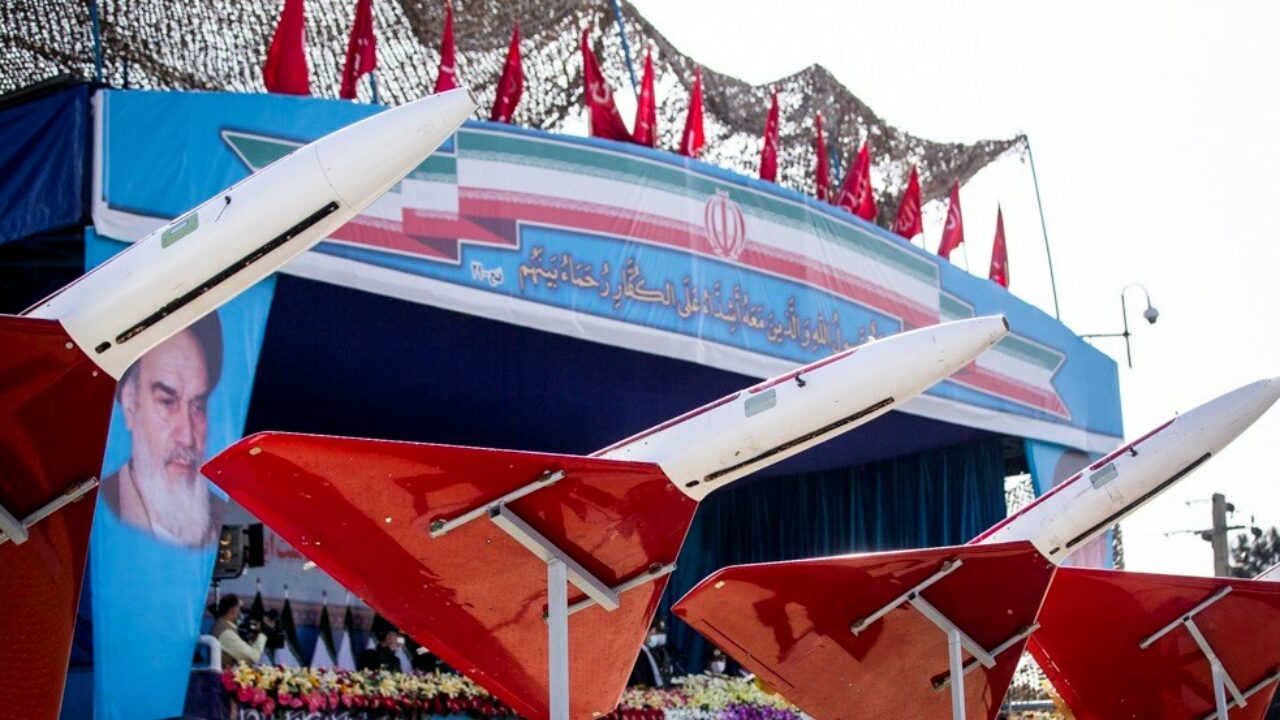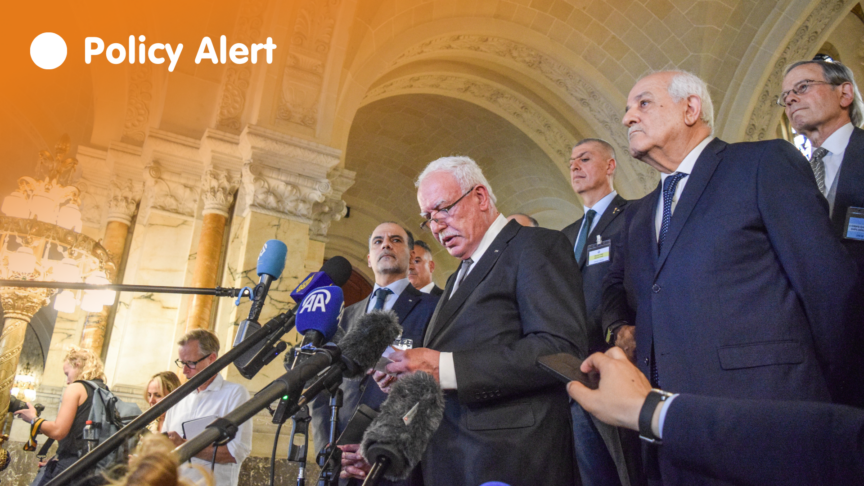Fly for a might guy: Putin’s drone deal with Iran
Russia’s rumoured purchase of Iranian drones is unlikely to have a major impact in its war on Ukraine. It is unclear how quickly Russian forces could become proficient with these systems
Russia reportedly intends to buy Iranian unmanned aerial vehicles (UAVs) – including armed models – to sustain its war on Ukraine. Yet, while the purchase has grabbed headlines around the world, it is unlikely to have a significant impact on the conflict.
The reporting around the possible deal, as recently revealed by US National Security Advisor Jake Sullivan and promptly denied by Tehran, provides many hints about the type and purpose of the systems Russia could buy from Iran. It also confirms that Russia’s drone programme is lagging behind those of its peers, especially in terms of armed systems, and is having only a limited impact in Ukraine. Russian drones such as the Eleron-3 and the Orlan-10 – both tactical UAVs used for intelligence, surveillance, target acquisition, and reconnaissance – have been decimated by Ukraine’s electronic warfare systems and short-range man-portable air defences. Meanwhile, Russia has only a few high-end platforms such as its Inokhodets combat drone and has used them sparingly, producing modest results. The country’s indigenous loitering munitions – such as the Zala KYB, which is capable of carrying a 3kg explosive payload and striking targets within a 40km range – seem to have a high failure rate.
Russia can quickly replace models such as the Orlan-10 and the Eleron-3, including with crowdsourced off-the-shelf UAVs. But it cannot do so with advanced strike platforms that have high-tech parts and take longer to manufacture – a problem that may soon grow as Western sanctions increasingly restrict Russia’s access to foreign-made components. Although one should not underestimate the resilience of the Russian defence industry, it is likely to lose much of its capacity in the medium to long term. For example, the Italian customs authorities recently seized several containers holding US-made components of UAVs that were worth tens of millions of dollars and were allegedly on their way to Russia via Qatar.
Russia is struggling to counter the growing number of precise, long-range artillery systems Ukraine is receiving from its Western partners, such HIMARS and M270s – which Kyiv has used to destroy dozens of Russian ammunition depots and command centres in the last month alone. The Russian military is now in desperate need of expendable combat UAVs, akin to Ukrainian TB2s, which can travel deep enough into enemy territory to disable these Ukrainian systems. Iran is well-placed to provide relatively cheap and quickly deployable UAVs of this kind.
Russia is struggling to counter the growing number of precise, long-range artillery systems Ukraine is receiving from its Western partners
Iran has a history of manufacturing a wide variety of UAVs, ranging from small tactical systems to medium altitude long endurance platforms with satellite navigation and precision-guided munitions, some of which are reversed engineered copies of captured US and Israeli drones. Tehran developed its vast and ambitious UAV programme out of necessity, to compensate for an air force atrophied by years of international sanctions. The drone programme is now the pride of the Iranian military.
In the past few years, Iran has exported drones to countries such as Ethiopia and Venezuela. It has also provided large numbers of these systems to its proxy forces across the Middle East – ranging from Hezbollah in Lebanon to the Houthis in Yemen, which have used them against targets in Israel and Saudi Arabia and the UAE respectively. Iran has established a drone factory in Tajikistan, further contributing to its status as a major drone power in the region.
Tehran could try to meet Moscow’s requirements by providing it with combat platforms such as the Mohajer-6 and the Shahed-129 – which the Iranian military has tested in Syria, Iraq, and Iran itself. Both systems can use various guided munitions; they have an estimated operational range of 200km and more than 1,000km respectively. Sullivan has confirmed that a Russian delegation viewed Shahed-129 and Shahed-191 combat drones during two recent visits to Kashan air base, south of Tehran. The Shahed-191, which can carry up to two Sadid-342 guided glide bombs, is a flying-wing combat drone based on the United States’ stealthy RQ-170 Sentinels – one of which was shot down by Iran in 2011.
Other Iranian platforms that might be useful to Russia include the Kaman-12 combat UAV, the Karrar, and the Ababil-2. The Kaman-12 is in service with the Iranian air force, has a declared range of 1,000km, and can carry up to four munitions, including Almas and Akhgar anti-tank guided missiles. The Karrar and the Ababil-2 are fast, versatile reconnaissance and strike platforms that Russia could use as suicide drones, or as decoys to reveal the position of Ukrainian air defences.
There is no precise publicly available data on Iran’s domestic production capacity but, in the past few years, Tehran has stepped up efforts to expand its drone arsenal. And it could sell many of the UAVs it produces to Russia. This, along with their expendability, makes them suitable for Russia’s short-term needs. Moscow is less likely to acquire platforms such as the Fotros, Iran’s largest drone, due to their negligible operational uses and limited production scale. But Russia could also seek to buy the loitering munitions that Iran now reportedly produces in large quantities. These include the long-range, propeller-driven Arash and the recently unveiled Shahed-136, which Iran has allegedly provided to the Houthis and which Russia could deploy in swarms.
Nevertheless, while Iran’s drones have made astonishing advancements in recent years, there is little publicly available information on their combat performance. This makes it hard to judge their true capabilities. It remains to be seen how effective these drones would be in a contested environment where a vast array of short- and medium-range air defences combined with electronic warfare systems. It is also unclear to what extent Iran could supply these UAVs to Russia and how quickly Russian forces could become proficient with these them in terms of training and deployment. The longer it takes, the less chance they will have a significant impact. Finally, with the exception of the Ghaem-9 (20km range) and Akhgar (30km range) missiles, the weapons these UAVs use have a limited range and their true precision against moving targets is unknown. This forces the drone to move close to its target and thereby increase its vulnerability to countermeasures – which is a huge problem in operations to destroy highly mobile self-propelled artillery systems that are protected by dedicated short-range air defences.
Russia has acquired foreign drones before. In 2010 Moscow established a bilateral partnership with Israel Aerospace Industry to locally produce the company’s medium-sized Searcher Mk II UAV, which the Russians renamed ‘Forpost’. But the Israeli government halted the deal in 2016, under pressure from the United States. This prompted Russia to indigenise the drone’s entire production line and to develop an upgraded combat version of the system, the Forpost-R – which has featured in Ukraine. In a sense, cooperation with Israel was instrumental to the launch of Russia’s UAV programme.
In all, while Iranian drones would be better than nothing, there is little chance that they would markedly shift the battle in Russia’s favour – just as Ukraine’s Turkish-made drones have not been decisive by themselves. Iranian UAVs will not solve Russia’s main problem: how to find enough manpower to rotate and regenerate its forces, sustain new operations, and hold conquered territory. As always in war, it would be misleading to view events through the lens of a single type of weapon.
The European Council on Foreign Relations does not take collective positions. ECFR publications only represent the views of their individual authors.



